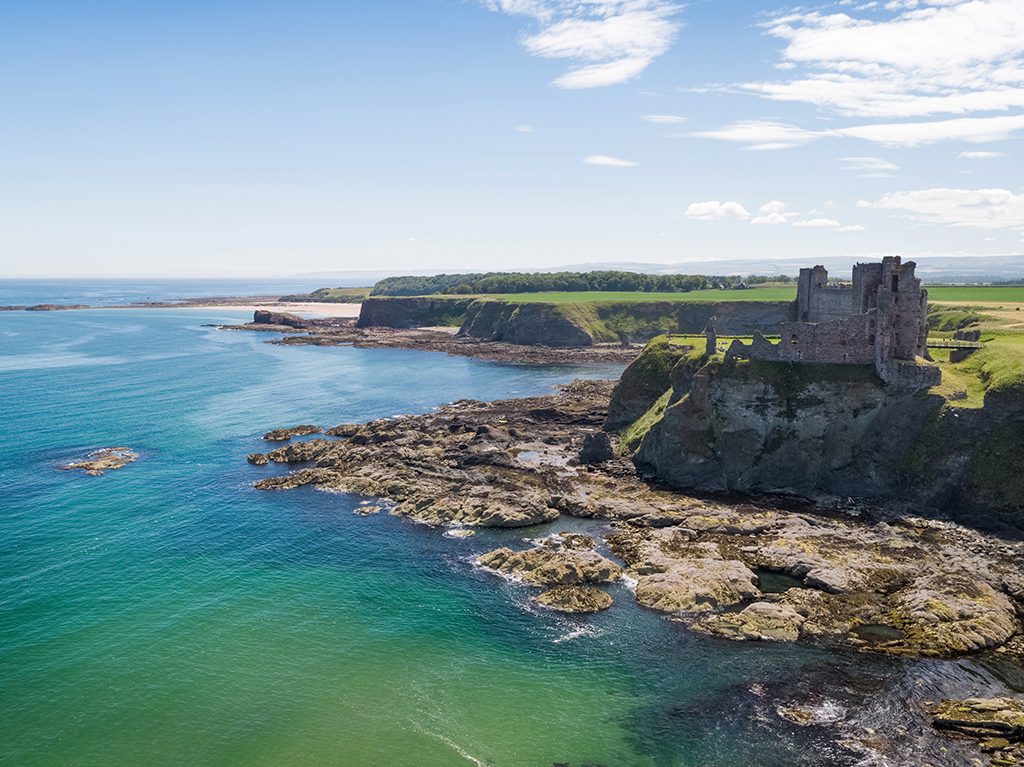Fresh from a major climate change summit in San Francisco, Historic Environment Scotland Climate Change Scientist David Harkin explores the links between cultural heritage and climate action, highlighting how we can use the past to inspire the future.
What is the role of cultural heritage in global climate action?
This is the question we were recently asked to answer at the Climate Heritage Mobilisation (CHM) event held in San Francisco. This was the first time cultural heritage had been given a dedicated platform at a global climate event. It marked a new international network to promote the inclusion of heritage in climate action.
This question became increasingly important after the recent publication of the new IPCC report. The key message of this report is that urgent change is required if global warming is to be limited to 1.5 oC. Without this in as little as 12 years the limit could be exceeded so it’s important that we ‘seize the best-case scenario rather than surrender to the worst’.

Participants at the inaugural Climate Heritage Network meeting
So what is the role of our cultural heritage?
There is a huge role for the cultural heritage sector to play. Not only do we have a unique and advantageous perspective of time, but we have the ability to demonstrate meaningful climate action to a wide audience. As many as 14 million visits are made to historic attractions in Scotland annually. That’s 14 million opportunities where the sector could be demonstrating clear climate action.
Learning from the past
Parts of our historic environment are on ‘the frontline.’ By this we mean that they have been built in landscapes that are particularly vulnerable to climate change. Our ancestors built in these locations because they offered them advantages like protection, access to water or good transport routes.

We find historic sites have an ability to weather change. Kilchurn Castle is an example of a site that even in the face of increased occurrence rates of flooding around it remains ‘high and dry’ on its rocky outcrop.
The features of many traditional buildings are not only pleasing to look at, but protect them from our wet climate. Looked after properly, our historic buildings have a resilience to our changing climate that may be lost on modern buildings.

Leading by example
Traditional buildings are often seen as drafty and damp and not very ‘future proof.’
In Scotland, 1 in 5 dwellings are built before 1919 and considered traditional. These properties have a massive role to play in helping Scotland meet highly ambitious climate change targets by reducing energy consumption and becoming more sustainable.
We can lead by example and show that our traditional buildings can make a positive contribution. Edinburgh Castle is a great example. The castle is our single biggest energy consuming site. It is made up of over 20 individual buildings and welcomes over 2 million visitors every year.

Since 2008/9 we have invested almost £500,000 in lowering energy usage and reducing the carbon footprint of the site. To date, this has resulted in a 40% reduction in carbon emissions. Savings in energy bills meant the initial investment was paid back within 5 years! The same principles can be replicated at other historic sites.
Our work was showcased in San Francisco by Paul Wheelhouse, Scottish Minister for Energy, Connectivity and the Islands. This ministerial backing showed the global audience how seriously Scotland is taking climate action.
The change maker
It’s almost impossible to avoid the historic environment in Scotland. There are over 56,000 protected sites. Our towns are dominated by traditionally constructed buildings and monuments. Our rural landscapes are steeped in history. Even infrastructures that many of us use every day, such as the Forth Bridges, are often iconic landmarks.
The way our cultural heritage plays a key role in climate action highlights how we can make real and meaningful change. By inspiring others to achieve the same, it can be a catalyst for positive change.
What role do you think our cultural heritage has to play in climate action? Join the conversation on Twitter using #ClimateHeritage

